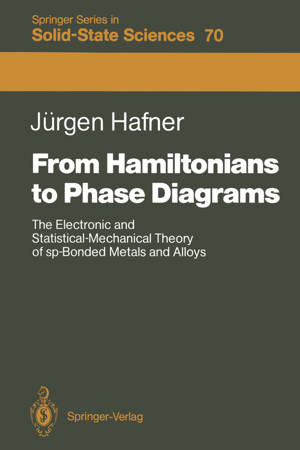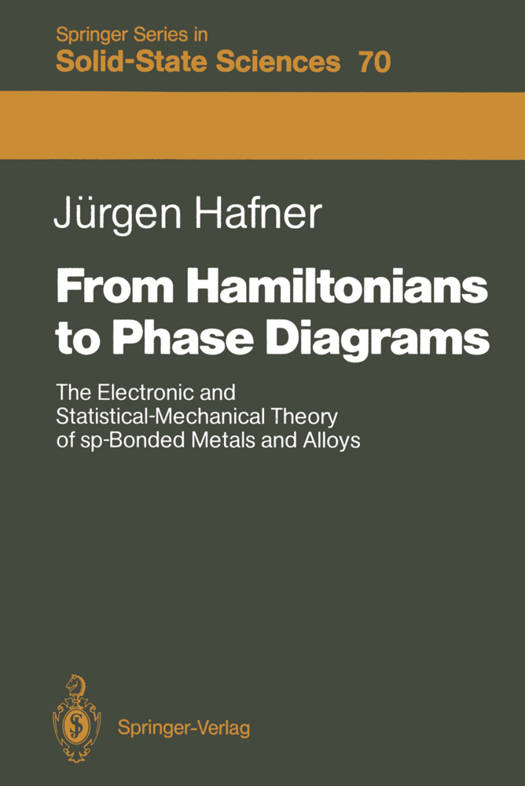
- Afhalen na 1 uur in een winkel met voorraad
- Gratis thuislevering in België vanaf € 30
- Ruim aanbod met 7 miljoen producten
- Afhalen na 1 uur in een winkel met voorraad
- Gratis thuislevering in België vanaf € 30
- Ruim aanbod met 7 miljoen producten
Zoeken
From Hamiltonians to Phase Diagrams
The Electronic and Statistical-Mechanical Theory of Sp-Bonded Metals and Alloys
Jürgen Hafner
€ 83,95
+ 167 punten
Omschrijving
The development of the modern theory of metals and alloys has coincided with great advances in quantum-mechanical many-body theory, in electronic structure calculations, in theories of lattice dynamics and of the configura- tional thermodynamics of crystals, in liquid-state theory, and in the theory of phase transformations. For a long time all these different fields expanded quite independently, but now their overlap has become sufficiently large that they are beginning to form the basis of a comprehensive first-principles the- ory of the cohesive, structural, and thermodynamical properties of metals and alloys in the crystalline as well as in the liquid state. Today, we can set out from the quantum-mechanical many-body Hamiltonian of the system of electrons and ions, and, following the path laid out by generations of the- oreticians, we can progress far enough to calculate a pressure-temperature phase diagram of a metal or a composition-temperature phase diagram of a binary alloy by methods which are essentially rigorous and from first prin- ciples. This book was written with the intention of confronting the materials scientist, the metallurgist, the physical chemist, but also the experimen- tal and theoretical condensed-matter physicist, with this new and exciting possibility. Of course there are limitations to such a vast undertaking as this. The selection of the theories and techniques to be discussed, as well as the way in which they are presented, are necessarily biased by personal inclination and personal expertise.
Specificaties
Betrokkenen
- Auteur(s):
- Uitgeverij:
Inhoud
- Aantal bladzijden:
- 404
- Taal:
- Engels
- Reeks:
- Reeksnummer:
- nr. 70
Eigenschappen
- Productcode (EAN):
- 9783642830600
- Verschijningsdatum:
- 15/12/2011
- Uitvoering:
- Paperback
- Formaat:
- Trade paperback (VS)
- Afmetingen:
- 152 mm x 229 mm
- Gewicht:
- 557 g

Alleen bij Standaard Boekhandel
+ 167 punten op je klantenkaart van Standaard Boekhandel
Beoordelingen
We publiceren alleen reviews die voldoen aan de voorwaarden voor reviews. Bekijk onze voorwaarden voor reviews.








